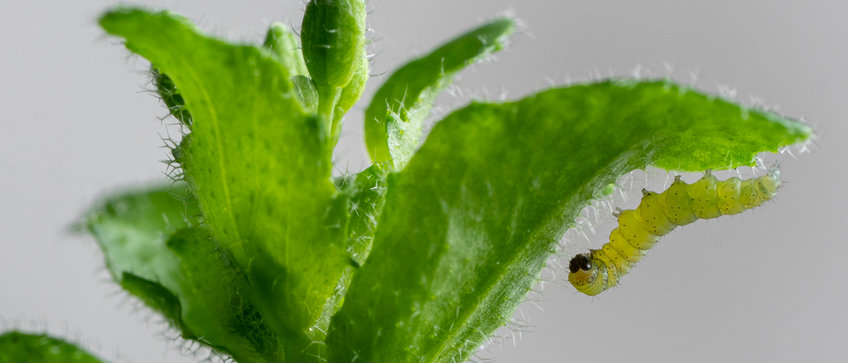
Publications of Matthias Erb
All genres
Journal Article (57)
2018
Journal Article
Aboveground herbivory induced jasmonates disproportionately reduce plant reproductive potential by facilitating root nematode infestation. Plant, Cell and Environment 41 (4), pp. 797 - 808 (2018)
2017
Journal Article
Localized micronutrient patches induce lateral root foraging and chemotropism in Nicotiana attenuata. Journal of Integrative Plant Biology 59 (10), pp. 759 - 771 (2017)
Journal Article
Herbivory-induced jasmonates constrain plant sugar accumulation and growth by antagonizing gibberellin signaling and not by promoting secondary metabolite production. New Phytologist 215 (2), pp. 803 - 812 (2017)
2016
Journal Article
A fungal endophyte helps plants to tolerate root herbivory through changes in gibberellin and jasmonate signaling. New Phytologist 211 (3), pp. 1065 - 1076 (2016)
Journal Article
A below-ground herbivore shapes root defensive chemistry in natural plant populations. Proceedings of the Royal Society B: Biological Sciences 283 (1827), 20160285 (2016)
Journal Article
: A latex metabolite benefits plant fitness under root herbivore attack. PLoS Biology 14 (1), e1002332 (2016)
Journal Article
A conserved pattern in plant-mediated interactions between herbivores. Ecology and Evolution 6 (4), pp. 1032 - 1040 (2016)
Journal Article
Benefits of jasmonate-dependent defenses against vertebrate herbivores in nature. eLife 5, e13720 (2016)
Journal Article
Auxin is rapidly induced by herbivory attack and regulates a subset of systemic, jasmonate-dependent defenses. Plant Physiology 172 (1), pp. 521 - 532 (2016)
2015
Journal Article
: A physiological and behavioral mechanism for leaf herbivore-induced systemic root resistance. Plant Physiology 169 (4), pp. 2884 - 2894 (2015)
Journal Article
A Nicotiana attenuata cell wall invertase inhibitor (NaCWII) reduces growth and increases secondary metabolite biosynthesis in herbivore-attacked plants. New Phytologist 208 (2), pp. 519 - 530 (2015)
Journal Article
Jasmonate-dependent depletion of soluble sugars compromises plant resistance to Manduca sexta. New Phytologist 207 (1), pp. 91 - 105 (2015)
2014
Journal Article
Carbon-11 reveals opposing roles of auxin and salicylic acid in regulating leaf physiology, leaf metabolism, and resource allocation patterns that impact root growth in Zea mays. Journal of Plant Growth Regulation 33, pp. 328 - 339 (2014)
Journal Article
Role of two UDP-Glycosyltransferases from the L group of Arabidopsis in resistance against Pseudomonas syringae. European Journal of Plant Pathology 139, pp. 707 - 720 (2014)
Journal Article
: The role of glucosinolates and the jasmonic acid pathway in resistance of Arabidopsis thaliana against molluskan herbivores. Molecular Ecology 23 (5), pp. 1188 - 1203 (2014)
Journal Article
Salicylic acid, a plant defense hormone, is specifically secreted by a molluscan herbivore. PLoS One 9 (1), e86500 (2014)
Journal Article
: 3-beta-D-glucopyranosyl-6-methoxy-2-benzoxazolinone (MBOA-N-Glc) is an insect detoxification product of maize 1,4-benzoxazin-3-ones. Phytochemistry 102, pp. 97 - 105 (2014)
Journal Article
The prospect of applying chemical elicitors and plant strengtheners to enhance the biological control of crop pests. Philosophical Transactions of the Royal Society of London, Series B: Biological Sciences 369, 20120283 (2014)
2013
Journal Article
: The maize lipoxygenase, ZmLOX10, mediates green leaf volatile, jasmonate, and herbivore-induced plant volatile production for defense against insect attack. The Plant Journal 74 (1), pp. 59 - 73 (2013)
Journal Article
Volatiles produced by soil-borne endophytic bacteria increase plant pathogen resistance and affect tritrophic interactions. Plant, Cell and Environment 37, pp. 813 - 826 (2013)